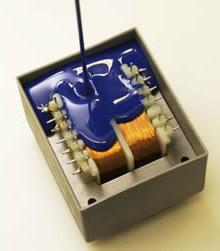
In electrical engineering, we often encounter the concept of “compound”. What is it? A compound is an insulating composition that is liquid at the time of use, and then hardens, does not contain solvents. The compound does not lose its properties at temperatures from -50 to +200 degrees Celsius, is resistant to radiation, is intended for impregnation, filling of components, parts of radio equipment, electrical engineering, to protect printed circuit boards and their components from external influences (mechanical, thermal, chemical, from vibration), especially in aggressive environments. Indeed, the conditions under which it is necessary to operate electronic and electrical devices and apparatuses are far from laboratory. This is the low temperature of the Far North, and the high humidity of the tropical climate, and the aggressive environment of outer space, etc. All of the above forces development engineers to use compound materials for pouring and sealing elements and equipment along with moisture-repellent coatings. Most often, two-component mixtures are used for these purposes.
By properties, the compounds are divided into:
- impregnating;
- electrical insulating;
- filling;
- elastic;
- plasticized with rubber;
- with a low molecular weight plasticizer.
Impregnating compound is a composition that is used to impregnate the windings of electric motors and devices.
Electrical insulating, in turn, are divided into:
- thermosetting (do not soften after hardening). These include epoxy, polyester and other resins;
- thermoplastic (soften when heated) - bitumen, waxy dielectrics, thermoplastic polymers (polystyrene, polyisobutylene).
Filling compound is a composition intended for filling cavities of cable joints, as well as for sealing in electric machines and devices.
Electrical insulating mixtures are made of methacrylic esters, used as both impregnating and casting. Such compounds after hardening at a temperature of 70-100 degrees Celsius (with a special hardener this threshold decreases to 20 degrees), become thermoset and can be used at temperatures from -55 to +105 degrees. They are used to impregnate various types of rotating equipment (coils and windings of electric motors, etc.), which provides effective protection against electric current.
The casting compound based on bitumen in terms of heat resistance (105 degrees) belongs to class “A”. Epoxy and organosilicon compounds possess the greatest heat resistance.
Elastic, rubber-plasticized mixtures have found particular use. Compound for forms is very popular today. Flexible silicone injection molds of various configurations are made from it. The temperature regime of such a compound reaches a limit of up to + 200 ° ; it is not recommended to heat it above 250 ° because polymer bonds are destroyed.
Currently, they produce various brands of compounds, each of which has found its own field of application and has properties characteristic of it.
The most popular was the epoxy compound - a polymer with low shrinkage, excellent dielectric characteristics and high adhesion. He is able to work in conditions of constant deformation. Epoxy resins are widely used in various kinds of equipment, installations, and structures. These mixtures are compatible with other oligomers, and their hardening is accelerated by mixing with other compounds. The disadvantage of the epoxy compound is the low operating temperature, which makes it impossible to use it in equipment that works in fairly harsh conditions.
Summing up, we can say that the use of compounds increases the reliability of operation and increases the life of electronic devices and electrical equipment, ensures their sealing and protection against vibrations, helps protect consumers from electric current.